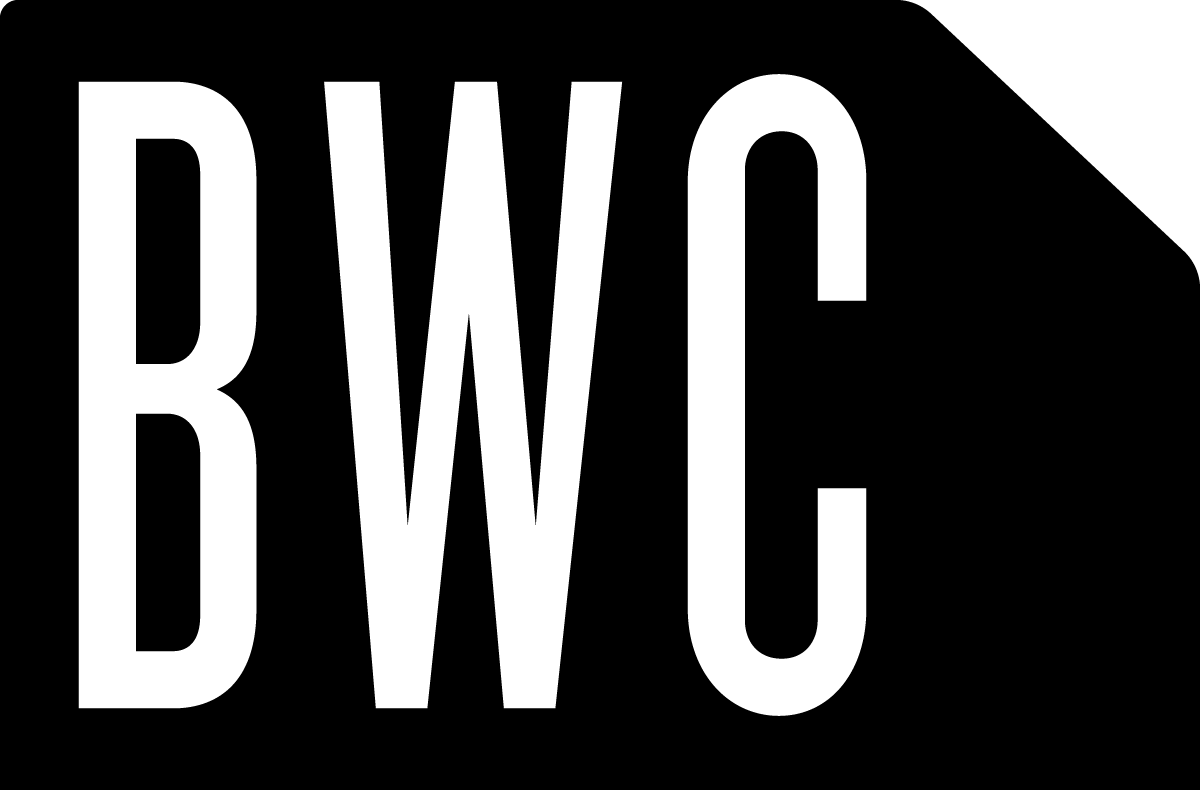The Wikipedia globe, now in 3D!
That's right! We've made the Wikipedia puzzle globe in 3D! No glasses required.
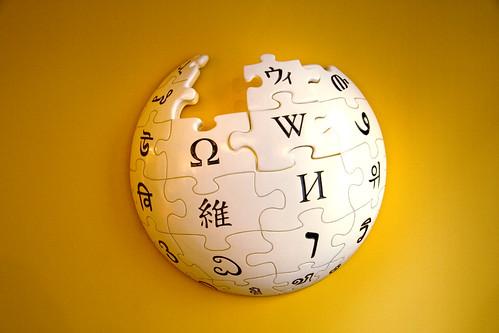
We started out with a 3D model, manipulating the globe in Blender to be flattened so it could hang against a wall.

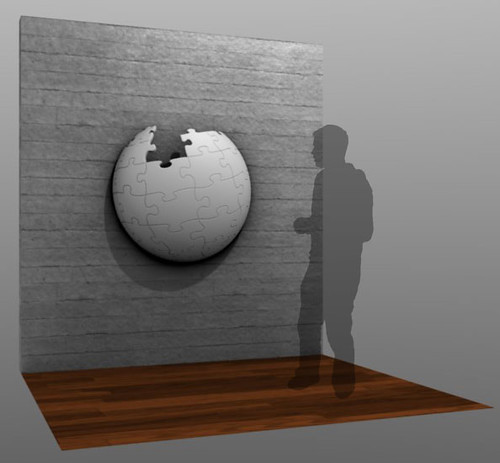
After creating a satisfactory version, we "sliced" the model in our CAM software, and set up the job to be cut on our CNC machine, Frank.
Using Trupan, a certified sustainably harvested fiber board that is very soft and mills well, we first made a prototype. Always, always first make a prototype.
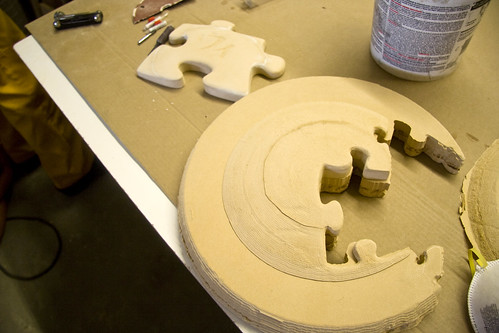
Here at BWC, we only use certified sustainably harvested woods, as we want to ensure there will be those far in the future making wonderful things like this. As you can see from the prototype, the globe was milled on the machine in horizontal slices, then built up into it's final shape. We created the globe to have two removable puzzle pieces. You can see one here in the final large version...
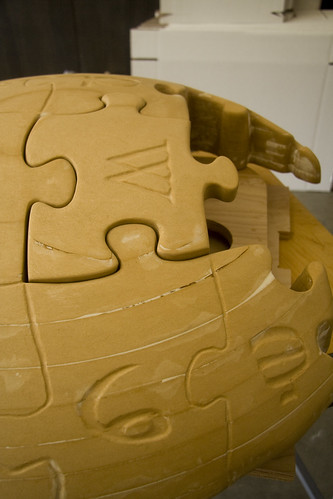
At this point the globe has been glued up and sanded down. Next, many repetitions of primer, sealing and sanding occurred, which eventually gave us this:
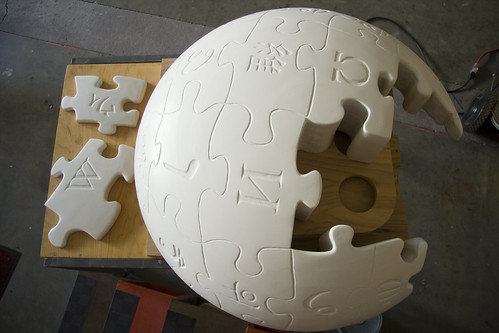
A smooth surface, with the letters and the puzzle piece lines well formed. A full day and a half of hand painting was next up. We wanted the globe to have a very rich, tactile look to it. Hand painting is the only way.
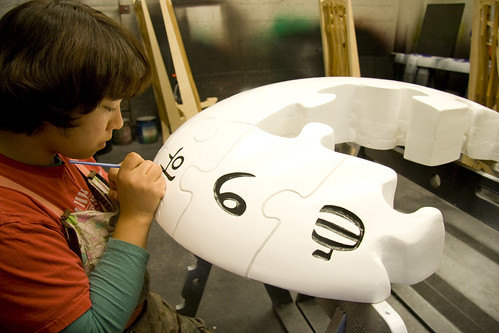
The letters and puzzle lines were painted in with meticulous care. The final globe has two removable puzzle pieces, and is coated with a waterborne lacquer to protect it from greasy finger prints. (We only use water based and water borne finishes here at Because We Can)
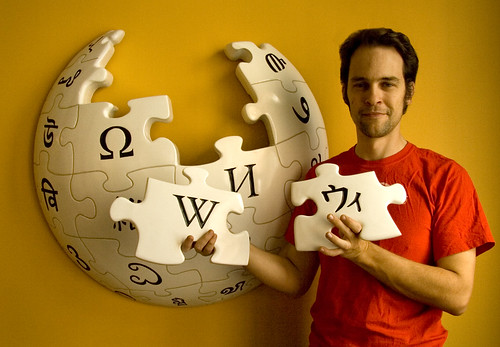
And now for a quick demonstration:
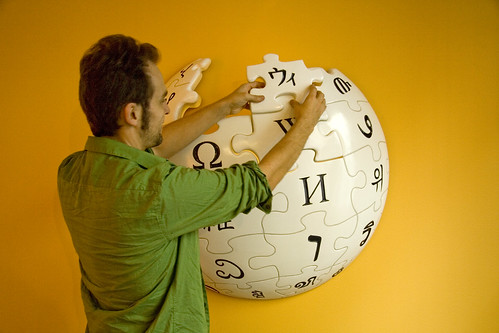
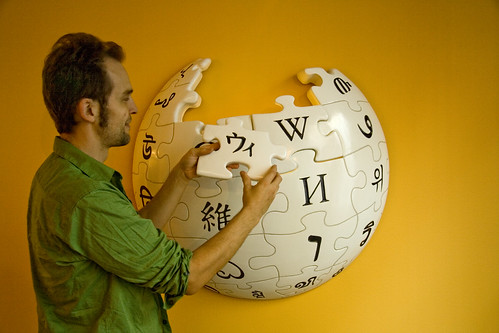
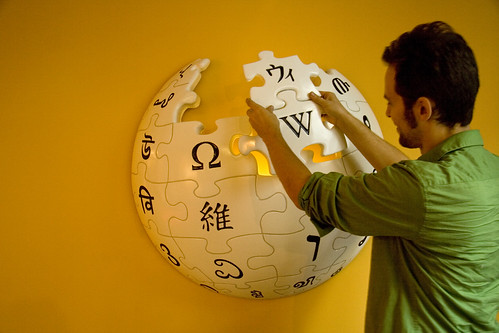

The Wikipedia Globe in 3D, brought to you by Because We Can!

